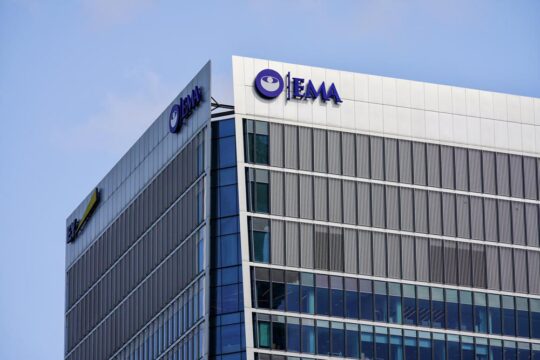Advertisment
ACC 2013 Report – The end for Niacin?

Results from a landmark study of specially formulated niacin in 25,673 high-risk patients appears to have extinguished any clinical role for niacin to reduce the risk of cardiovascular events in these patients, researchers said here.
Compared to treatment with simvastatin or simvastatin/ezetimibe (Vytorin), the relative risk of myopathy was more than four times higher for patients treated with Tredaptive (extended-release niacin plus laropiprant, an anti-flushing agent), Jane Armitage, FFPH, FRCP, from the University of Oxford, reported at the opening session of the American College of Cardiology (ACC) meeting.
Over 3.9 years, there were 31 serious adverse event rate among every 1,000 niacin-treated patients.
“These were not ‘side-effects’… these were serious adverse events that led to people being hospitalised — a significant increase in hemorrhagic stroke, serious infections, new onset diabetes — a 25% increase in new onset diabetes versus statin-treated patients,” said Rory Collins, FMed Sci FRCP, also of Oxford. Collins chaired the steering committee for the HPS2-Thrive (Heart Protection Study 2-Treatment of HDL to Reduce the Incidence of Vascular Events) study.
Indeed the safety data were strikingly grim:
- Excess diabetic complications: 3.7% (P<0.0001)
- Excess new onset diabetes: 1.8% (P<0.0001)
- Excess infection: 1.4% (P<0.0001)
- Excess gastrointestinal complications: 1% (P<0.0001)
- Excess bleeding (GI and intracranial): 0.7% (P<0.0002)
The study found no significant benefit of extended-release niacin/laropiprant on the primary outcome of major vascular events when added to effective statin-based low density lipoprotein (LDL)-lowering therapy.
Asked about a future for extended-release niacin, Collins said it might not be dead “but it’s not healthy.” Collins spoke at an ACC press briefing.
Spencer B. King, III, MD, said it was pretty clear that the results will change clinical practice because “we won’t be pouring niacin on low [high density lipoprotein] anymore.”
But King, who is director of academic affairs at St. Joseph’s Health System in Atlanta, said there may still be a role for niacin for specific patients since the findings are “based on a large population study and that doesn’t tell us what we need to know about the individual patient.”
Christie Ballantyne, MD, of Methodist DeBakey Heart Center in Houston, agreed that it is too soon to close the door on niacin, noting that patients in the study had very well-controlled LDL (mean baseline LDL 63 mg/dL) “but in the U.S. we don’t use niacin on patients with LDLs of 63.”
The HPS2-THRIVE investigators reported an average LDL reduction of 10 mg/dL and the LDL benefit of extended-release niacin was greatest among those with the highest LDL at baseline.
“This trial answers the niacin question in those with well-controlled LDL — no question — but it is not so clear in patients with high LDL values,” he said.
Ballantyne co-chairs the program committee for the ACC meeting.
Ballantyne’s sentiments were echoed by Steven Nissen, MD, director of cardiovascular medicine at the Cleveland Clinic in Ohio. Nissen said it was difficult to “sort out how much bleeding was due to niacin and how much to laropiprant.”
And he was sharply critical of the trial design because roughly half of the patients were recruited at centres in China. “It is well known that both niacin and high-dose statins carry risk in Asians,” he said.
But Armitage and Collins maintained that the serious hazards outweighed any benefit and both urged that the “role of extended-release niacin for treatment and prevention of cardiovascular disease needs to be reconsidered.
The HPS2-THRIVE trial enrolled more than 20,000 high risk patients at centres in Scandinavia, the U.K. and China.
Because niacin is notoriously difficult to tolerate, patients were tried on a month long run in of the niacin combo (extended-release niacin 2 g plus laropiprant 40 mg) to determine tolerability. About a third of patients dropped out during that run-in period, as was reported last week in the European Heart Journal.
Finally, Armitage noted that while the results were disappointing, it would be difficult to characterize them as surprising since HPS2-THRIVE findings “are consistent with previous niacin trials.”
What remains unknown is whether it is possible to boost HDL in a way that would achieve a clinical benefit.
Ballantyne noted that there are ongoing trials of other agents — anacetrapib and evacetrapib — either of which may bolster or topple the so-called HDL theory.
The HPS2-THRIVE study was funded by Merck. The Clinical Trial Service Unit & Epidemiological Studies Unit (CTSU) at the University of Oxford received funding from the UK Medical Research Council, the British Heart Foundation, and Cancer Research UK.
The Clinical Trial Service Unit has a staff policy of not accepting honoraria or other payments from the pharmaceutical industry, except for the reimbursement of costs to participate in scientific meetings.
Reference:
Armitage J, et al “HPS2-THRIVE: Randomized placebo-controlled trial of ER Niacin and laropriprant in 25,673 patients with pre-existing cardiovascular disease” ACC 2013.





